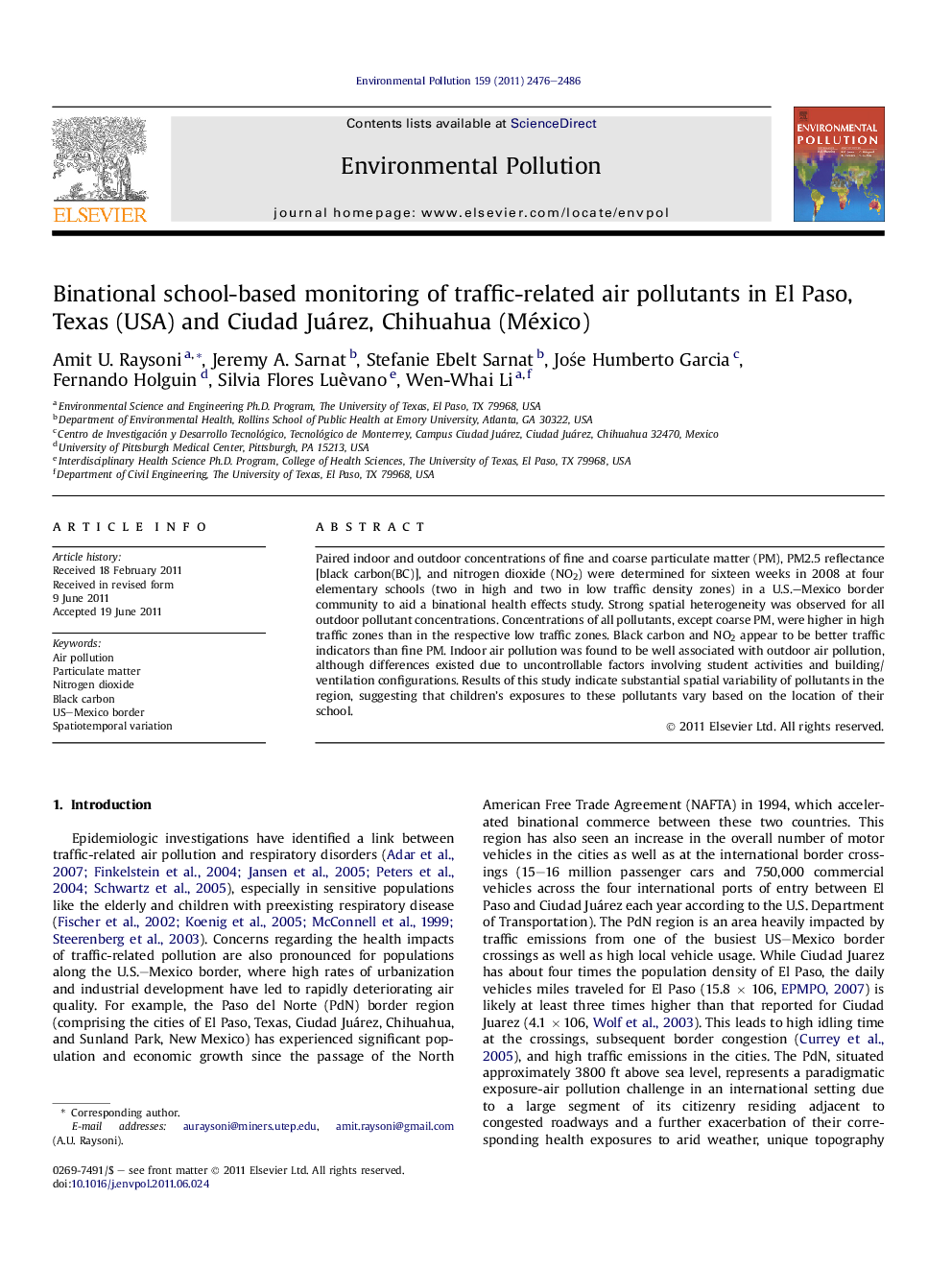| Article ID | Journal | Published Year | Pages | File Type |
|---|---|---|---|---|
| 6319098 | Environmental Pollution | 2011 | 11 Pages |
Paired indoor and outdoor concentrations of fine and coarse particulate matter (PM), PM2.5 reflectance [black carbon(BC)], and nitrogen dioxide (NO2) were determined for sixteen weeks in 2008 at four elementary schools (two in high and two in low traffic density zones) in a U.S.-Mexico border community to aid a binational health effects study. Strong spatial heterogeneity was observed for all outdoor pollutant concentrations. Concentrations of all pollutants, except coarse PM, were higher in high traffic zones than in the respective low traffic zones. Black carbon and NO2 appear to be better traffic indicators than fine PM. Indoor air pollution was found to be well associated with outdoor air pollution, although differences existed due to uncontrollable factors involving student activities and building/ventilation configurations. Results of this study indicate substantial spatial variability of pollutants in the region, suggesting that children's exposures to these pollutants vary based on the location of their school.
⺠First binational investigation characterizing traffic air pollutants at four schools in El Paso, USA and Cd. Juarez, Mexico. ⺠Paired in-outdoor sampling of PM2.5, PM10â2.5, reflectance [black carbon(BC)], and NO2 for 16 weeks in 2008 at each school. ⺠Two schools (one in each city) were located in high traffic density areas and the other two in areas of low traffic density. ⺠Usage of spatially resolved environmental indictors of traffic pollutants in a range of exposure settings. ⺠Substantial intra-urban spatial variability in pollutant concentrations observed between and within the two cities.
